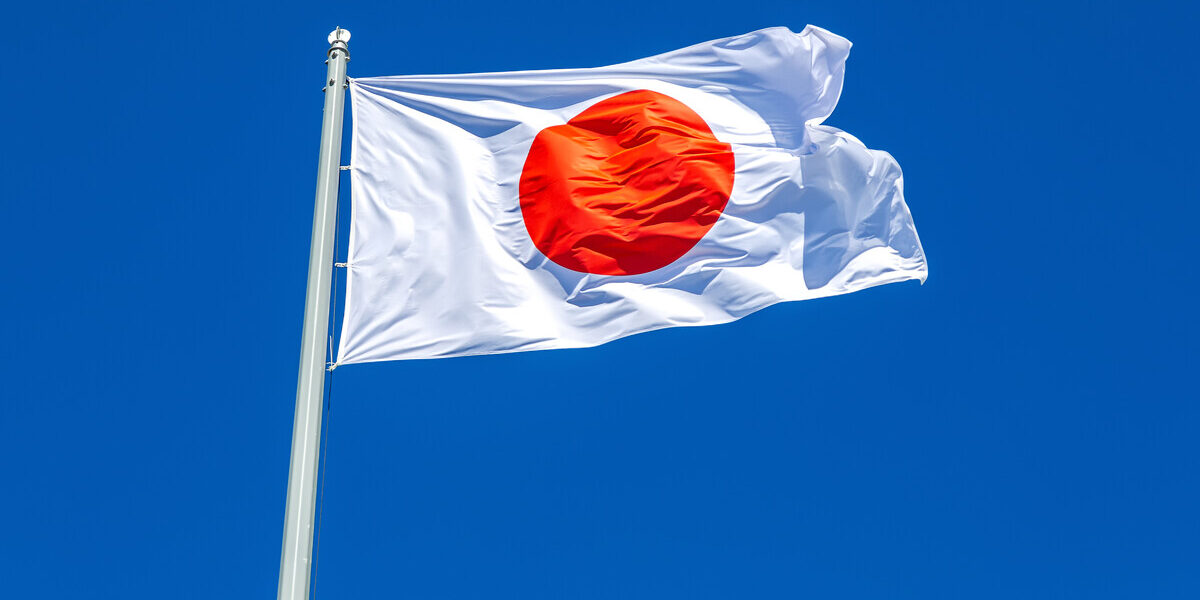Japan’s economy has long been a focal point of global interest due to its unique characteristics, historical growth patterns, and the challenges it faces in the modern economic landscape. We explore in this article Japan’s Gross Domestic Product (GDP), highlighting its historical growth trends, key drivers of economic performance, current statistics for 2024, and forecasts for the future, particularly focusing on 2025 and beyond.
Japan boasts one of the most robust economies globally, experiencing significant growth following World War II. The nation’s market economy expanded rapidly over several decades.
Overview of Japan’s economy
Japan’s economy has faced prolonged stagnation since the asset price bubble burst in the early 1990s. However, recent trends indicate a potential shift towards recovery, characterized by a “nominal renaissance,” where nominal GDP growth is expected to return, driven by changes in societal expectations regarding wages and prices. The economy is currently at a critical juncture, with real GDP growth projected to be around 1 percent in 2025, following a slowdown in 2024 due to external economic pressures.
Approximately 70 percent of Japan’s GDP is derived from the services sector, making it the fourth-largest economy worldwide. Key industries within this mature services sector include real estate, professional, scientific, and technical services, along with wholesale and retail commerce. Japan’s post-war economic growth was marked by advancements in industrial production and a strong domestic market, fueled by aggressive export strategies and manufacturing investments. By the mid-1980s, Japan’s standard of living had risen to levels comparable to other developed nations. However, the country faces structural challenges, particularly an aging population. Since 2012, Japan has adopted a three-pronged economic plan known as Abenomics, focusing on structural reforms, flexible fiscal policies, and expansionary monetary measures. Since taking office in October 2021, Prime Minister Fumio Kishida has initiated the ‘New Capitalism’ strategy, emphasizing investments in digital projects, green startups, technology, and human resources to foster long-term sustainable growth.
As of 2024, the expansionary monetary policy aspect of Abenomics began to taper off. The Bank of Japan (BOJ) has discontinued its Yield Curve Control program and raised its policy interest rate above the previous low of negative 0.1 percent. Additional interest rate hikes are anticipated to manage rising wages, stimulate economic activity, and maintain inflation at the BOJ’s target of 2 percent.

Understanding Japan’s GDP
In terms of nominal GDP, Japan ranks as the third-largest economy in the world. However, its relative economic influence has diminished since the 1980s, when it was the second-largest economy, closely trailing the U.S. The backbone of Japan’s economic strength is its industrial sector, particularly in electronics, machinery, automobiles, and robotics. This demonstrates the evolution and significance of Japanese manufacturing. Japanese firms have adapted to global market demands by relocating production facilities overseas amidst economic pressures and currency fluctuations. The country is renowned for its quality and innovation, as evidenced by global brands like Sony, Panasonic, and Toyota. Japan is also recognized for its efficient manufacturing technologies and was a pioneer in adopting techniques such as ‘Just-In-Time’ production, which have significantly influenced global manufacturing practices, as noted by Focus Economics.
Economic components
A substantial portion of Japan’s economy is derived from the service sector, which encompasses banking, insurance, retail, transportation, and telecommunications. Tokyo serves as a major global financial hub, housing some of the world’s largest investment banks and insurance companies. Over the past decade, Japan has experienced deflation multiple times, setting it apart from other developed economies. Consequently, interest rates have remained in negative territory for an extended period, with the central bank finally returning them to positive levels in 2024.
What is Japan’s GDP?
In 2023, Japan’s GDP was valued at $4,212.95 billion, reflecting a growth rate of 1.9 percent, as reported by Trading Economics. Despite employing a significant portion of the workforce, agriculture contributes only a small fraction to Japan’s national income. Strong export performance and a rise in tourism have helped sustain this growth. The International Monetary Fund (IMF) forecasts growth rates of 0.7 percent for 2024 and 1 percent for 2025. The Japanese government is expected to maintain its favorable fiscal policies to stimulate investment, implement structural reforms, and prioritize economic growth.
Major export and import commodities and markets
Private consumption, which constitutes over half of the Japanese economy, rose by just 0.9 percent, down from an initial estimate of 1.0 percent growth. External demand, measured by exports less imports, detracted 0.1 percentage points from growth, matching initial assessments. Conversely, domestic demand contributed 0.8 percentage points to the total.
Historical growth of Japan’s GDP
Japan’s economic growth has been notable since the post-World War II era, with GDP averaging $2,938.99 billion from 1960 to 2023, reaching a peak of $6,272.36 billion in 2012 and a low of $47.42 billion in 1960. According to updated data from the Cabinet Office, Japan’s GDP grew at an annualized rate of 2.9 percent in the second quarter of 2024 compared to the previous three months. This figure contrasts with the preliminary estimate of a 3.1 percent increase and the consensus forecast of 3.2 percent growth from economists. The updated statistic reflects a quarter-on-quarter expansion of 0.7 percent in real terms, compared to the previously reported 0.8 percent rise. Based on consumption and other metrics, markets are eager to anticipate when the Bank of Japan will raise its benchmark interest rate again, which it did in July, adjusting it from 0-0.1 percent to 0.25 percent. The capital expenditure component of GDP, indicative of private demand strength, increased by 0.8 percent in the second quarter after an initial forecast of a 0.9 percent increase.
Several sectors contribute significantly to Japan’s economy and GDP; here are some key highlights:
Energy sector
Liquefied natural gas is vital to Japan’s energy landscape, particularly in electric power generation, where it serves as a cleaner alternative to coal and oil. Natural gas is crucial in Japan’s energy and resource framework, predominantly produced in Niigata prefecture and extracted in Chiba and Fukushima.
Manufacturing and exports
In 2022, the manufacturing sector contributed approximately 119.5 trillion Japanese yen to Japan’s GDP, making it the most valuable industry, as per Statista. Year-over-year growth has been notable in sales of food, fabricated metal goods, transportation equipment, and general-purpose machinery, driving the sector’s expansion. Transportation equipment has seen exceptional sales and rapid growth, presenting significant opportunities for further development.
Employment in manufacturing
As of 2023, the manufacturing industry accounted for about 15 percent of all jobs in Japan, making it a crucial player in the domestic labor market. Although the shift towards a service economy has reduced the share of manufacturing, it still remains comparable to countries like South Korea, Thailand, and Malaysia, which are the next largest manufacturing hubs in Asia after China and Vietnam.
Trade overview
Approximately 47 percent of Japan’s GDP is derived from foreign trade, positioning it as the fifth-largest exporter and importer globally, according to the latest World Bank figures. Key exports include automobiles (11.6 percent), electronic integrated circuits (4.5 percent), semiconductors and related products (4.1 percent), motor vehicle components (3.9 percent), and petroleum fuels (2 percent). Major imports consist of petroleum oils (11.2 percent), natural gas (8 percent), coal (6.6 percent), electronic integrated circuits (3.6 percent), and telephones.
Service sector and domestic consumption
The service sector accounts for about 70 percent of Japan’s GDP, with key areas including banking, real estate, retail, insurance, telecommunications, and transportation. Leading Japanese service companies, such as Softbank, Nomura, Mitsubishi Estate, ÆON, and Japan Airlines, rank among the largest globally. These companies play a significant role in the service sector, adapting to global market demands and contributing to economic growth. Additionally, the government has introduced financial incentives to promote digitalization in the business sector and established the Digital Agency in 2021 to expedite public sector digitalization.
According to a private survey, Japan’s service industry experienced growth for the third consecutive month in September 2024, though at a slightly slower pace. S&P Global Intelligence reported a decline in the final au Jibun Bank Service PMI from 53.7 in August to 53.1 in September. While the average of the preceding three months showed steady growth, this figure was below the initial estimate of 53.9 but still above the 50.0 threshold separating expansion from contraction. The services sector has balanced the challenges faced by the industrial sector, with strong demand leading to new business growth for three consecutive months. Despite falling to a 20-month low, business confidence remained high, largely due to the sluggish manufacturing sector’s impact on new business expansion.
External trade and investment
Japan’s economy relies heavily on foreign trade, having established significant global trade partnerships. In 2022, Japan’s top export partners included China (19.4 percent), the United States (18.7 percent), South Korea (7.2 percent), Hong Kong (4.4 percent), and Thailand (4.3 percent). Moreover, its primary import partners were China (21 percent), the United States (10.1 percent), Australia (9.8 percent), the United Arab Emirates (5.1 percent), and Saudi Arabia (4.7 percent), according to Santander. Japan and China together account for nearly 25 percent of global GDP, making Japan the EU’s second-largest trading partner in Asia. An Economic Partnership Agreement was signed between the two countries in 2019. Additionally, Japan is a member of the Regional Comprehensive Economic Partnership (RCEP), considered one of the largest free trade agreements in history, involving countries that account for approximately 30 percent of global GDP, including China, Australia, and South Korea.
Government role in the economy
The Japanese government plays a crucial role in shaping the economy through a distinct management system that differentiates it from other market economies. Unlike the more hands-off approach seen in some countries, the Japanese government exercises significant control primarily through consultation with businesses and indirect involvement in banking. This collaborative approach fosters a close relationship between the government and the private sector, emphasizing long-term planning and strategic guidance.
Central to this framework is the Economic Planning Agency, responsible for long-term economic planning and the daily monitoring of economic activities. This agency, alongside other governmental departments, employs various policy measures to influence resource allocation across industrial sectors and guide specific industry organization. Such strategic intervention helps ensure the Japanese economy remains robust and competitive on the global stage.
Furthermore, the Japanese government has enacted numerous policies to promote economic growth and development, including substantial investments in infrastructure, education, and research and development. These investments enhance the country’s economic capabilities and ensure sustainable growth. Additionally, the government has been instrumental in promoting Japan’s strategic expansion and global presence, particularly in trade and investment. This proactive role highlights the importance of the Japanese government in driving economic growth and maintaining stability.


Following a slightly revised 0.6 percent decline in Q1, Japan’s GDP increased by 0.7 percent quarter-over-quarter in Q2 2024, compared to market and flash predictions of a 0.8 percent rise, according to Trading Economics. The success of spring wage negotiations, resulting in the highest average pay in over 30 years, and the revival of the automobile sector after scandals involving major automakers contributed to the best quarterly growth since Q2 2023. Nuclear power also plays a crucial role in Japan’s energy landscape, especially following the Fukushima disaster, with the country restarting plants that comply with new safety standards. Overall, domestic demand was strong, turning positive for the first time in five quarters, indicating a gradual recovery from the economic stalemate.
As one of the world’s economically strongest nations, Japan’s economic growth is expected to maintain an upward trend, with encouraging prospects for GDP. Below are some key points:
Continuing expansion in fiscal 2025 and 2026
According to a report by Mitsubishi Research and Consulting (MURC), Japan is projected to experience a 1.3 percent year-on-year growth in fiscal 2025. Japanese companies significantly contribute to economic growth through their roles in energy imports and resource development. The percentage wage increase from spring negotiations and its effect on private consumption will be influential factors. A labor shortage and improvements in corporate performance are expected to create an environment conducive to higher wages, although increases may be smaller than in the previous year. Stabilizing import prices should also slow the pace of price increases in Japan.
External demand is expected to bolster the economy as stabilized prices and the cessation of monetary tightening support improving economies abroad, leading to increased Japanese exports. The report anticipates continued improvement in the Japanese economy through fiscal 2026. If the expansion that began in May 2020 persists until July 2026, it will reach 73 consecutive months, matching the longest growth period since the post-war era. Achieving this milestone will require a sustained virtuous cycle of growth and distribution.
Digitalization as a growth catalyst
The IMF suggests that digitalization can generate additional growth momentum. The pandemic highlighted Japan’s uneven adoption of technology. The Japanese industry has played a vital role in technological advancements, particularly in manufacturing, transitioning from light to heavy industries and excelling in automotive and electronics. Despite a significant electronics sector and being a leading user of industrial robots, Japan lags behind other economies in the adoption of digitalization across commercial, government, and financial sectors, partly due to reliance on outdated IT systems.
The cabinet-established Digital Agency is among several initiatives aimed at accelerating digitalization in the business sector and federal and municipal governments. Policy assistance should be carefully designed to minimize potential drawbacks for unskilled individuals to ensure an inclusive transition. Enhancing public trust through improved financial and digital literacy is also a key priority to accelerate the adoption of digital financial services.
Global economic impact
Japan’s economy exerts considerable influence on the global stage, being one of the largest exporters and importers worldwide. Its economic growth, driven by a highly developed manufacturing sector, has positioned Japan as a significant player in the global economy. Known for efficiency and innovation, Japanese manufacturing has not only driven the national economy but also significantly impacted global trade dynamics.
Japan’s economic influence extends internationally through active participation in regional and global economic organizations such as the Asia-Pacific Economic Cooperation (APEC) and the World Trade Organization (WTO). These platforms enable Japan to play a crucial role in shaping global economic policies and enhancing international trade relations. Additionally, Japan is a significant contributor to international development, providing substantial foreign aid to developing nations, thus promoting global economic stability and growth.
The implications of Japan’s economic growth on the global economy are profound. Its exports and imports are integral components of global trade, affecting supply chains and market dynamics worldwide. Furthermore, Japan’s financial markets are essential to the global financial system, with Japanese investments and financial instruments playing a critical role in international finance. This interconnectedness underscores the importance of Japan’s economic health, not only for the nation itself but also for the global economy.


What is Japan’s current GDP?
According to Trading Economics, Japan’s GDP was valued at $4,212.95 billion in 2023. The GDP rose by 0.7 percent quarter-over-quarter in Q2 2024. Additionally, Japan’s agricultural landscape is often highlighted for its picturesque qualities, particularly in regions like Hokkaido and Fukuoka, which are key to the country’s economic activities.
How has Japan’s GDP grown over the last decade?
Several factors, including deflation, the COVID-19 pandemic, and an aging population, have contributed to Japan’s below-average GDP growth over the past ten years:
- 2013–2022: Japan’s GDP growth averaged 0.6 percent, below the G7 average.
- 2011–2019: Japan’s GDP grew at an average rate of just under 1.0 percent per year.
- 2020: The GDP growth saw a record low of -7.80 percent in Q2, followed by a rebound to 5.60 percent in Q3.
- 2024 Q1: Japan’s GDP contracted by 0.50 percent compared to the previous quarter.
What are the predictions for Japan’s GDP in the next few years?
Japan’s GDP grew by 1.9 percent in 2023 and is expected to continue steady growth of 1.0 percent in 2024 and 1.1 percent in 2025. According to the OECD, this growth is primarily driven by domestic demand, as global uncertainties weigh on external demand.
MURC predicts that Japan’s real GDP growth rate will increase for the fourth consecutive year in fiscal 2024, projecting a year-on-year growth of +0.6 percent. This is a slight decline from the +0.8 percent growth seen in fiscal 2023. The agency attributes this seemingly low figure to the impact of the base effect, which was -0.7 percent.





